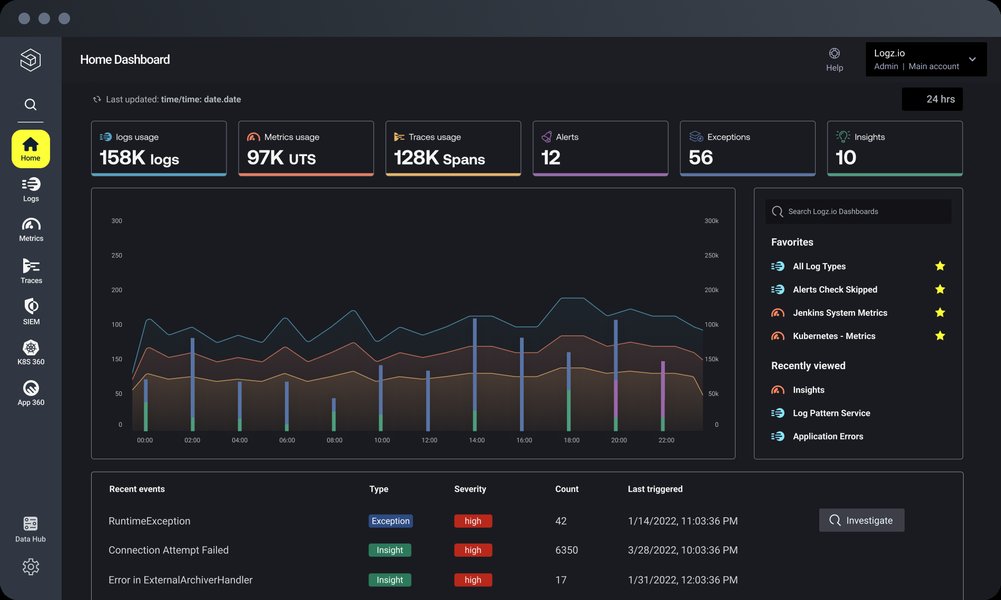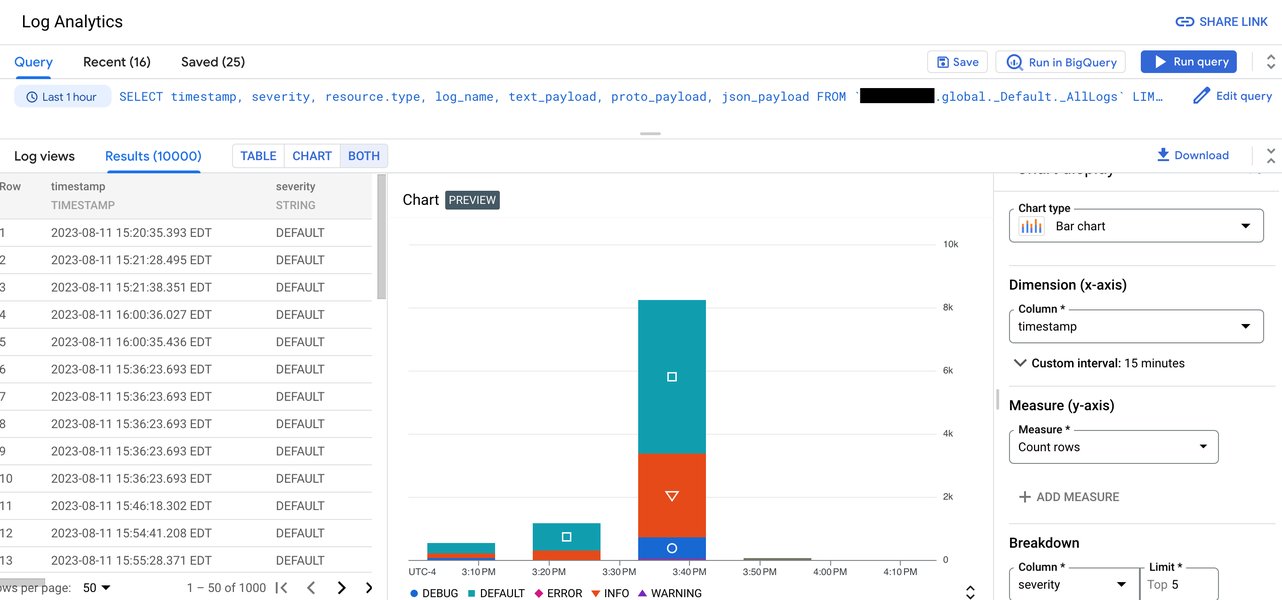
Unlock Log Data Secrets: Top AI Tools for Intelligent Parsing and Insightful Visualization
Discover how Artificial Intelligence is revolutionizing log analysis, turning complex data streams into actionable intelligence and clear visual narratives.
In today's data-driven IT environments, log files are generated in overwhelming volumes from applications, servers, network devices, and cloud services. Manually sifting through this deluge of data to identify critical events, anomalies, or performance bottlenecks is a herculean task. This is where AI-powered tools step in, transforming log analysis from a reactive chore into a proactive, intelligent process. These tools leverage machine learning (ML), natural language processing (NLP), and advanced analytics to automatically parse unstructured log data, detect hidden patterns, predict potential issues, and visualize complex information in an easily digestible format.
Key Insights: AI in Log Analysis
- Automated Intelligence: AI tools significantly reduce manual effort by automating log parsing, pattern recognition, and anomaly detection, allowing teams to focus on strategic tasks.
- Proactive Problem Solving: By identifying deviations from normal behavior and predicting potential failures, these tools enable proactive issue resolution and root cause analysis (RCA), minimizing downtime.
- Enhanced Visualization: AI-driven platforms offer sophisticated visualization capabilities, such as interactive dashboards, trend graphs, and heatmaps, making complex log data understandable at a glance.
The Power of AI in Parsing and Visualizing Logs
Traditional log management systems often struggle with the sheer volume, velocity, and variety of modern log data. AI introduces a paradigm shift, offering capabilities that go far beyond simple keyword searching or rule-based alerting.
Automated and Intelligent Log Parsing
Raw log data is often unstructured or semi-structured, making it difficult to analyze programmatically. AI, particularly NLP and ML algorithms, excels at:
- Log Template Extraction: Identifying common patterns and structures within log messages to create templates, effectively converting unstructured text into structured data.
- Field Extraction: Automatically identifying and extracting key fields such as timestamps, IP addresses, user IDs, error codes, and event messages.
- Log Summarization & Clustering: Grouping similar log entries and summarizing vast amounts of log data into concise, meaningful insights.
This automated parsing is crucial for transforming raw logs into a format that can be effectively analyzed and visualized.
Advanced Anomaly Detection and Root Cause Analysis
One of the most significant contributions of AI in log analysis is its ability to detect anomalies that might be missed by human analysts or traditional tools.
- Baseline Learning: AI systems learn the "normal" behavior of applications and infrastructure by analyzing historical log data.
- Deviation Detection: Machine learning models (both supervised and unsupervised) can then identify subtle deviations from these baselines, flagging potential issues, security threats, or performance degradation in real-time.
- Reduced False Positives: Advanced AI algorithms are better at distinguishing genuine anomalies from benign fluctuations, reducing alert fatigue.
- Root Cause Analysis (RCA): Some AI tools can correlate log events with metrics and traces from other systems to help pinpoint the root cause of an issue, significantly speeding up troubleshooting.
Insightful Data Visualization
Visualizing log data is key to understanding trends, patterns, and outliers. AI-powered tools enhance visualization by:
- Dynamic Dashboards: Offering interactive dashboards that display key performance indicators (KPIs), error rates, and system health in real-time.
- Trend Analysis: Generating graphs and charts that show trends over time, helping to identify recurring issues or predict future problems.
- Contextual Visualization: Presenting anomalies and insights within a broader context, often linking them to specific services, components, or timeframes.
- Interactive Exploration: Allowing users to drill down into specific log events, filter data dynamically, and explore relationships between different data points.

An example of an observability platform dashboard, showcasing how log data, metrics, and traces can be visualized for comprehensive system monitoring.
Leading AI Tools for Log Parsing and Visualization
A variety of tools, ranging from comprehensive commercial platforms to flexible open-source libraries, leverage AI to enhance log analysis. Here are some prominent examples:
Commercial Platforms
Datadog
Datadog is a SaaS-based monitoring and analytics platform that offers robust AI-powered log management. It excels at automatically parsing logs from diverse sources and uses machine learning to detect anomalous patterns, outliers, and trends. Its visualization capabilities include customizable dashboards, real-time graphs, and service maps, providing a unified view of logs, metrics, and traces.
LogicMonitor
LogicMonitor provides an AIOps platform that uses AI and ML for log analysis. It dynamically learns normal log data behavior to proactively surface anomalies and pinpoint root causes. The platform offers scalable visualization through data lakes and schema-on-read analytics, enabling trend analysis across complex multi-cloud environments. It focuses on reducing alert noise and predicting potential system failures.
Skylar Automated RCA (by ScienceLogic)
Formerly Zebrium, Skylar focuses on automated root cause analysis using unsupervised machine learning. It processes large volumes of log messages in real-time to identify rare or abnormal events without requiring manual training. Skylar uses GenAI for summarization and recommendations, presenting findings in dashboards that help quickly identify root causes.
Logz.io
Logz.io is an observability platform built on open-source technologies like ELK and OpenTelemetry, enhanced with AI and ML. It automates log parsing, uses AI for anomaly detection (Cognitive Insights), and helps reduce noise by clustering similar logs. Visualization includes rich dashboards integrating logs, metrics, and traces, with AI-driven insights and alerting.
Splunk
Splunk is a powerful platform for searching, monitoring, and analyzing machine-generated big data. While broadly capable, its AI and ML features (e.g., Splunk Machine Learning Toolkit, IT Service Intelligence) enable advanced log analysis, including anomaly detection, predictive analytics, and sophisticated visualizations for operational intelligence and security.
Coralogix
Coralogix is a streaming data platform that leverages machine learning to analyze logs, metrics, and traces in real-time. It focuses on automating log parsing and anomaly detection, providing features like "Loggregation" to automatically cluster similar logs and identify patterns. Its Streama© technology enables cost-effective analysis and rich visualizations.
Open-Source Tools and Libraries
LogAI (by Salesforce)
LogAI is an open-source Python library for log analytics and intelligence. It supports tasks like log parsing, summarization, clustering, and anomaly detection using various time-series, statistical learning, and deep learning models. LogAI adopts the OpenTelemetry data model and includes a GUI toolkit for interactive analysis and benchmarking of anomaly detection algorithms.
ELK Stack (Elasticsearch, Logstash, Kibana) with AI Extensions
The ELK Stack is a popular open-source solution for log management. Logstash handles data ingestion and parsing, Elasticsearch provides scalable search and storage, and Kibana offers powerful visualization. While not inherently AI-driven, it can be extended with machine learning capabilities (e.g., Elastic's own ML features or integration with libraries like TensorFlow/PyTorch) for anomaly detection and advanced analytics.

User interface for log analytics, often seen in platforms like Google Cloud Logging or Kibana, showing structured logs and query capabilities.
LogPAI
LogPAI is an open-source AI platform specifically aimed at automated log analysis. It provides tools and benchmarks for log parsing (e.g., logparser toolkit) and anomaly detection (e.g., LogLizer). It's a valuable resource for researchers and developers working on AI-driven log analysis solutions.
MyMap.AI Free AI Log Analysis Tool
MyMap.AI offers a free online tool that uses AI to analyze and visualize log data. Users can upload log files or paste content, and the AI automatically generates insights, detects patterns and anomalies, and creates charts and dashboards. It's designed for ease of use and quick insights without complex setup.
Comparative Overview of AI Log Analysis Tool Capabilities
The following chart provides a comparative, opinionated analysis of selected AI log analysis tools based on their strengths in key areas. These scores reflect general capabilities and can vary based on specific configurations and use cases. The scores range from 3 (foundational) to 10 (highly advanced).
This radar chart visualizes how different AI log analysis tools compare across several key capability dimensions, offering a quick overview of their relative strengths. Choosing the right tool depends on specific organizational needs, existing infrastructure, and budget.
The Ecosystem of AI-Powered Log Analysis
The process of AI-driven log analysis involves several interconnected stages, from data ingestion to insight generation. The mindmap below illustrates this ecosystem, highlighting the core components and techniques involved.
of diverse log formats"] id1b["Intelligent Visualization
for clear insights"] id1c["Proactive Anomaly
Detection & Prediction"] id2["Key AI Techniques Employed"] id2a["Machine Learning"] id2aa["Supervised Learning
(e.g., classification)"] id2ab["Unsupervised Learning
(e.g., clustering, anomaly detection)"] id2b["Deep Learning
(e.g., LSTMs for sequences)"] id2c["Natural Language Processing (NLP)
for text understanding"] id3["Core Functional Capabilities"] id3a["Log Structuring & Templating"] id3b["Real-time Anomaly & Outlier Detection"] id3c["Complex Pattern Recognition"] id3d["Automated Root Cause Analysis (RCA)"] id3e["Predictive Analytics & Trend Forecasting"] id4["Common Visualization Outputs"] id4a["Interactive & Customizable Dashboards"] id4b["Trend Graphs, Time Series Charts"] id4c["Heatmaps & Geographical Maps"] id4d["Automated Alerting Systems"] id5["Tool Categories & Examples"] id5a["Commercial SaaS Platforms"] id5aa["Datadog, LogicMonitor, Splunk, Logz.io"] id5b["Open-Source Libraries & Frameworks"] id5ba["LogAI (Salesforce), ELK Stack + AI plugins, LogPAI"] id5c["Specialized AI-First Tools"] id5ca["Skylar Automated RCA, MyMap.AI"] id6["Key Business & Operational Benefits"] id6a["Reduced Mean Time To Resolution (MTTR)"] id6b["Enhanced Operational Efficiency & Productivity"] id6c["Improved System Reliability & Uptime"] id6d["Actionable Insights from Vast Log Data"]
This mindmap provides a conceptual overview of how AI integrates into the log analysis lifecycle, showcasing the various techniques, capabilities, outputs, and benefits involved.
Video Insight: Machine Learning for Log Analysis
The following video provides an overview of how machine learning is applied in log analysis, particularly in the context of AIOps and continuous integration processes. It discusses the use of open-source tools to support these efforts, giving a practical perspective on leveraging AI for log data.
This video delves into AI4CI (AI for Continuous Integration), a collection of open-source AIOps tools designed to enhance CI/CD pipelines through intelligent log analysis. It illustrates how ML algorithms can process log data to identify patterns indicative of build failures or performance issues, thereby enabling faster feedback loops and more resilient software delivery. Understanding these concepts can help teams appreciate the practical application of AI in everyday development and operations.
Summary Table of Selected AI Log Analysis Tools
To further clarify the landscape, the table below summarizes key aspects of some of the discussed AI tools for log parsing and visualization.
| Tool Name | Primary AI Focus | Visualization Strength | Key Advantage |
|---|---|---|---|
| Datadog | Anomaly detection, pattern recognition | Excellent (Unified dashboards, real-time graphs) | Comprehensive observability, ease of use for SaaS |
| LogAI (Salesforce) | Log parsing, anomaly detection, clustering (library) | Good (GUI toolkit for interactive analysis) | Open-source flexibility, strong for research & custom solutions |
| LogicMonitor | Proactive anomaly detection, baseline learning | Very Good (Dynamic dashboards, trend analysis) | AIOps-driven proactive insights, multi-cloud support |
| Skylar Automated RCA | Unsupervised ML for root cause analysis | Good (RCA summaries, anomaly dashboards) | Automated RCA without manual training, fast insights |
| ELK Stack (with AI extensions) | Log parsing (Logstash), anomaly detection (ML plugins) | Excellent (Kibana's rich visualizations) | Open-source, highly customizable, scalable |
| MyMap.AI | Automated insights, anomaly detection (NLP) | Good (Quick charts, interactive chat-based analysis) | Free, very easy to use for quick analysis of smaller datasets |
| Logz.io | AI-driven anomaly detection, log clustering | Very Good (Integrated dashboards, Cognitive Insights) | Open-source based (ELK/OTel) with enterprise AI features |
This table offers a snapshot, and the best tool choice will always depend on specific requirements such as scale, budget, existing infrastructure, and desired depth of AI integration.
Frequently Asked Questions (FAQ)
Recommended Next Steps
- How can I implement AI for real-time log anomaly detection in my current system?
- What are the main differences and trade-offs between open-source and commercial AI log analysis platforms?
- How is Natural Language Processing (NLP) specifically used for advanced log message understanding and classification?
- What are the best practices for visualizing complex log data to derive meaningful insights quickly?
References
Last updated May 20, 2025